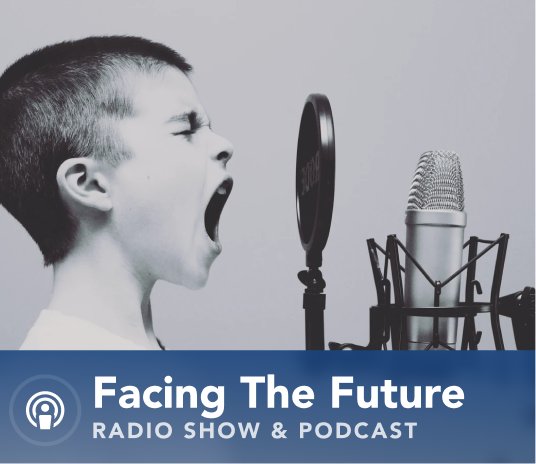On the latest Facing the Future, I was joined by Congressional Budget Office Director, Phil Swagel, Concord Coalition Executive Director, Bob Bixby and Policy Director Tori Gorman. We discussed CBO’s recent update to its 10-year economic outlook and the latest happenings in the Congressional appropriations process.
[Note: Portions of this week’s Facing the Future can be seen in the video clips posted below.]
Director Swagel said the economic update underlies the budget baseline update to be released in the fall. He said the macro-economic situation is especially uncertain due to the pandemic, and he distinguished between good news and less-good news in CBO’s economic-outlook update.
“The good news is that we have had a lot of bounceback,” he said.
Swagel added that the economy is recovering, but output is still considerably below where it was before the pandemic. But he said there has been a fairly strong initial rebound, with job creation returning already.
“There’s been some aggressive action taken by the Congress and Federal Reserve that mitigated some of the downturn and then there’s been a diminishing of social distancing,” he said.
Even in the face of a rise in COVID-19 cases, Swagel said CBO forecasts a continuous recovery. However, they project that getting back to where we were before the pandemic will take until mid 2022. From there, CBO expects a period of economic expansion.
“Our forecast allows for the possibility of seasonal resurgences of the virus and regional variation,” said Swagel. “I think we see that now, including some of the states that have reopened sooner, facing challenges and pausing or going in reverse in some ways.”
Swagel also highlighted some of the challenges in the trends they are seeing.
“This downturn is different, and one thing that is especially difficult is that the economic and social pain is not felt evenly across our society,” he said. “There have been certain sectors that have been hit especially hard; there are certain regions that have been hit especially hard.”
CBO worked with various scientific and modeling groups around the world, including epidemiologists, to look at a wide range of scenarios for what might happen with the progression of the pandemic.
“We tried to come to something that‘s in the middle of the distribution of possible outcomes,” Swagel said. “So, we recognize that it could be much worse than what we have in our forecast; it could be better.”
Swagel also provided insight into how CBO projected the impact of social distancing, a complicating factor to take into consideration in this unique environment.
“We have a virus group within the agency that draws on analysts from across different divisions, with expertise in epidemiology,” he said. “Trying to look at various models and understand the possible ways that the pandemic could proceed, and then they generate a social-distancing parameter.”
“What’s been interesting is to see how the effect of social distancing on the economy depends on actions taken by policymakers … and importantly it depends on the reactions of individuals, families and businesses.”
On the fiscal impact of the pandemic and the nation’s current path, Swagel said debt and deficits do matter and, over time, there will be effects on capital accumulation, on investment and therefore on productivity and growth.
“Before the pandemic, what was so striking about the fiscal situation, is that we were on track for trillion-dollar deficits, even when the economy was strong,” he said. “Now, of course, the fiscal response to the pandemic has widened deficits and increased the debt-to-GDP ratio.”
He added that, with a worsened fiscal situation, CBO expects the debt-to-GDP ratio to be around 100 percent by the end of this fiscal year.
You can read remarks and analysis by Bixby on the updated-CBO economic outlook by clicking here.
Gorman joined the program, providing an update on the Congressional-appropriations processes for this year. She said that, although we are already deep into the fiscal year, the appropriations process is really just getting started. The House is marking up and churning out their twelve bills now, but the process is likely to slow down in the Senate – in part because of Senate rules and partisan divides on key issues.
She also explained where the appropriations process fits in the overall budget process, how it works and how the final year of existing discretionary-spending caps is impacting appropriations.
“Part of what is making this appropriations process even more difficult this year, is not only the compressed calendar … but we also have really tight budget caps for Fiscal Year 2021,” Gorman said. “If they can’t get their work done on time, I would fully expect Congress to have to pass a continuing resolution in September that will fund the government probably through early-to-mid December.”
Read more analysis from Gorman in a new FAQ on whether there will be a government shutdown this year by clicking here.
Hear more on Facing the Future. I host the program each week on WKXL, NHTalkRadio.com (N.H.), and it is also available via podcast. Join me and my guests as we discuss issues relating to national fiscal policy with budget experts, industry leaders and elected officials. Past broadcasts are available here. You can subscribe to the podcast on Spotify, iTunes, Google Play Music or with an RSS feed. Follow Facing the Future on Facebook and watch videos from past episodes on The Concord Coalition YouTube channel.





